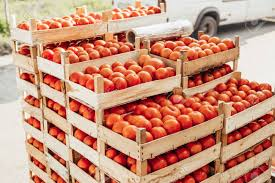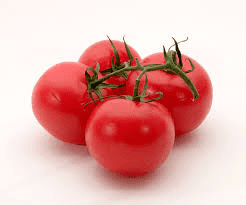Tomatoes are among the most widely grown and consumed vegetables globally. They are used in various culinary applications, from fresh salads to cooked sauces, making them a staple in many diets.
For farmers and businesses, understanding how to process, package, and export tomatoes can unlock significant market opportunities. This comprehensive guide will walk you through each step, ensuring that your tomatoes maintain their quality from the farm to international markets.
Processing tomatoes begins right after harvesting. The first step is to wash the tomatoes thoroughly to remove dirt, pesticides, and any other contaminants. This is typically done using large tanks of water and sometimes a mild disinfectant.
After washing, the tomatoes are sorted to separate the ripe, undamaged ones from those that are overripe, underripe, or damaged. Sorting can be done manually or with the help of machines equipped with sensors to detect flaws.
The next step is blanching, which involves briefly boiling the tomatoes and then plunging them into cold water. This process makes it easier to remove the skins. Once blanched, the tomatoes can be processed into various forms depending on the desired end product.
They can be diced for use in canned products, pureed for sauces and soups, or cooked down further to create tomato paste. Each of these products requires specific processing techniques to maintain the tomatoes’ natural flavors and nutrients.
Packaging is a critical part of ensuring that processed tomatoes remain fresh and safe for consumption. The type of packaging used depends on the form of the processed tomato product. Fresh tomatoes are often packed in plastic clamshells or cardboard boxes with ventilation holes to allow for air circulation. Processed tomatoes, like diced tomatoes or tomato paste, are typically packed in cans, jars, or aseptic cartons.
All packaging materials must be food-grade and free from harmful chemicals that could contaminate the tomatoes. The packaging process must also ensure that the tomatoes are sealed properly to prevent spoilage.
For canned products, this often involves vacuum sealing to remove air, which helps in extending the shelf life of the product. Labels should be applied to each package, providing clear information about the product, including its type, weight, ingredients, and origin. This information is crucial for consumers and regulatory authorities.
Exporting tomatoes involves complying with a range of local and international regulations designed to ensure food safety and quality. Each country has its own set of standards, which can include requirements for pesticide residue levels, packaging materials, and labeling. It is essential to stay updated with these regulations to avoid any compliance issues that could result in shipment delays or rejections.
Before exporting, you must obtain the necessary documentation, such as export licenses and phytosanitary certificates, which verify that the tomatoes meet the importing country’s health and safety standards.
Additionally, you should ensure that the transportation method is suitable for maintaining the quality of the tomatoes. This often means using refrigerated containers for fresh tomatoes to prevent them from spoiling during transit. Processed tomato products, if properly sealed and packaged, are less susceptible to temperature variations but still require careful handling.
Working with reliable logistics partners can make a significant difference in ensuring that your tomatoes arrive at their destination in optimal condition. They can assist with navigating customs procedures, managing documentation, and providing the best transportation solutions.
By carefully managing each step from processing to packaging and exporting, you can ensure that your tomatoes reach international markets in the best possible condition. This not only maximizes the profitability of your tomato products but also builds a reputation for quality and reliability in the global marketplace.
Whether you are a farmer looking to expand your business or a company aiming to tap into new markets, following these guidelines will help you succeed in the competitive world of tomato exports.
How to Process Tomatoes for Exportation

1. Harvesting: Pick tomatoes when they are fully ripe and at their best quality to ensure they are fresh and have a good taste.
2. Sorting: Remove damaged or overripe tomatoes, and separate them by size and color to ensure uniformity in the export batch.
3. Washing: Clean the tomatoes thoroughly with clean water to remove dirt, pesticides, and other contaminants.
4. Inspecting: Check for any signs of disease or pests. Only export tomatoes that are free from any defects.
5. Drying: Air-dry the tomatoes to remove excess water after washing. This helps in preventing mold and spoilage during transportation.
6. Cooling: Place the tomatoes in a cool environment to lower their temperature, which helps in prolonging their shelf life.
7. Grading: Grade the tomatoes based on size, color, and quality to meet the standards required by the importing country.
8. Storing: Store the graded tomatoes in a cool, dry place until they are ready to be packed for shipment.
9. Pre-cooling: Pre-cool the tomatoes before packing to maintain their freshness during transport.
10. Packing: Use appropriate packaging materials like crates or boxes that are ventilated to pack the tomatoes securely.
Read Also: How to Raise Catfish and Tilapia in the Same Fish Pond at the Same Time
How to Package Tomatoes for Exportation

1. Selecting Packaging Material: Choose strong, ventilated packaging materials like cardboard boxes or wooden crates to protect tomatoes during transit.
2. Layering: Arrange the tomatoes in layers inside the packaging material, using soft padding like foam or shredded paper between layers to prevent bruising.
3. Labeling: Clearly label each package with information such as the type of tomatoes, weight, and country of origin.
4. Sealing: Ensure that the packages are properly sealed to prevent contamination and loss during transportation.
5. Temperature Control: Use temperature-controlled packaging if possible to keep tomatoes fresh throughout the journey.
6. Weight Check: Ensure that each package meets the weight requirements for export to avoid issues with shipping regulations.
7. Documentation: Include all necessary documentation like invoices, phytosanitary certificates, and any other required export permits.
8. Stacking: Stack the packaged tomatoes carefully to avoid crushing the lower layers.
9. Securing: Secure the packages on pallets if shipping large quantities to make handling easier and safer.
10. Transporting to Port: Arrange for the transportation of the packaged tomatoes to the export point, ensuring that they are handled with care to avoid damage.
How to Export Tomatoes for Profits
1. Market Research: Research potential markets and understand the demand for tomatoes in those regions.
2. Meeting Import Requirements: Ensure that your tomatoes meet the import regulations and quality standards of the target market.
3. Finding Buyers: Connect with importers or distributors in the target market who are interested in buying your tomatoes.
4. Pricing: Set competitive prices that cover your costs and provide a profit margin, considering factors like transportation and tariffs.
5. Negotiating Terms: Negotiate terms of sale with your buyers, including payment terms, delivery schedules, and responsibilities.
6. Shipping Logistics: Choose a reliable shipping company that offers the best rates and conditions for transporting your tomatoes.
7. Insurance: Get insurance coverage for the shipment to protect against losses or damages during transit.
8. Customs Clearance: Prepare and submit all necessary customs documents to avoid delays at the border.
9. Delivery Tracking: Track the shipment to ensure it reaches the destination on time and in good condition.
10. Payment Collection: Ensure timely payment from your buyers and address any issues promptly to maintain good business relationships.
Read Also: The Best Specie of Fish to Raise for Profit
Frequently Asked Questions (FAQs) About Tomatoes

1. What are the ideal conditions for growing tomatoes?
Tomatoes thrive in well-drained soil with a pH of 6.0-6.8 and require full sunlight for at least 6-8 hours a day.
2. How long does it take for tomatoes to mature?
Tomatoes typically take 60-85 days from transplanting to reach maturity, depending on the variety.
3. What are the common pests and diseases that affect tomatoes?
Common issues include aphids, tomato hornworms, blight, and blossom-end rot.
4. How can I extend the shelf life of tomatoes?
Store tomatoes at room temperature until they ripen, then refrigerate to slow down spoilage.
5. What are the nutritional benefits of tomatoes?
Tomatoes are rich in vitamins C and K, potassium, folate, and antioxidants like lycopene.
6. How do I choose the best tomatoes for export?
Select firm, uniformly colored tomatoes that are free from blemishes and diseases.
7. Can I export tomatoes year-round?
Yes, but it depends on the growing conditions and availability in your region.
8. What packaging materials are best for exporting tomatoes?
Ventilated cardboard boxes or wooden crates are ideal for protecting tomatoes during transit.
9. How do I ensure my tomatoes meet export quality standards?
Follow strict grading, sorting, and packing procedures, and obtain necessary certifications.
10. What are the major markets for exporting tomatoes?
Major markets include the United States, European Union, Canada, and the Middle East.
Read Also: Banana Tree Care: What You Need to Know

